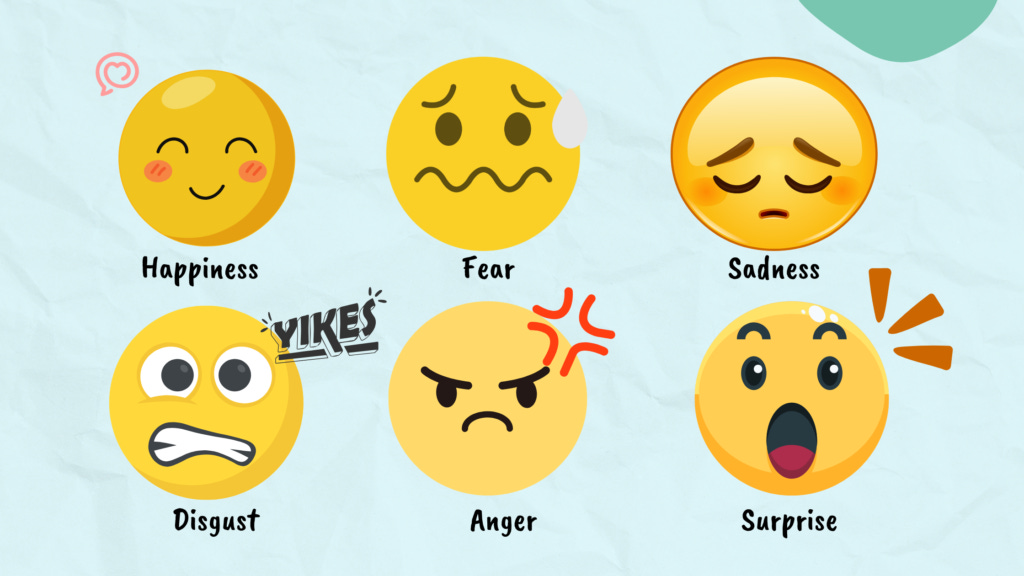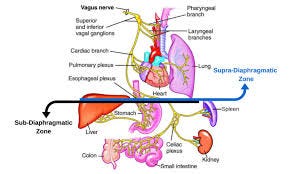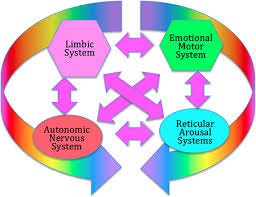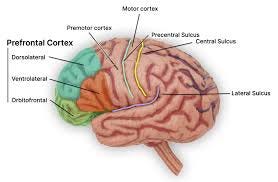5 Ways Unresolved Trauma Can Show Up in Dating 🧠
What your nervous system is trying to tell you when you freeze, overthink, or pull away from someone you actually like ( min Read)
TL;DR Summary
Your dating habits aren’t random; they’re your nervous system’s love language in disguise.
What looks like “detachment,” “overthinking,” or “bad timing” is usually your brain protecting you from pain that once felt unbearable.
The solution isn’t to date better. It’s to feel safer.
When Love Feels Like a Threat
You know that feeling when someone finally texts you back and your whole body short-circuits?
You tell yourself you’re just “excited,” but your chest is tight, your heart’s racing, and you suddenly can’t figure out how to sound normal.
Or when you start talking to someone new, and instead of enjoying it, your brain turns into a 24/7 security system:
“Why haven’t they texted?”
“Did I say something weird?”
“Do they even like me?”
You’re not crazy. You’re just dating with a nervous system that doesn’t know the difference between love and threat.
Because somewhere along the line, love started to mean work.
It meant performing, pleasing, reading the room, staying small enough to be wanted but not so visible that you’d be left.
You think you’re anxious about dating. You’re not.
You’re anxious about feeling safe while being seen.
That’s the real wound.
So today, we’re breaking down 5 of the most common dating behaviors I see that indicate something deeper.
The subtle, sneaky ways unresolved trauma shows up in dating, even when you swear you’re fine.
And of course, I’ll hit on one small thing you can do to start shifting each pattern.
Let’s dive in!
1. “Checking the Message but Not Replying Yet”
You see their name on your phone and suddenly it feels like you’ve been hit with 400 volts of electricity.
Your heart’s pounding, your brain’s buffering, your thumbs are just… hovering.
You tell yourself, “I don’t want to seem too eager.”
But the truth? You’re scared of being too much.
This is anxious attachment’s favorite mind trick.
It makes you believe that if you manage every micro-expression, every emoji, every pause, you can somehow control the outcome.
When you grew up with unpredictable love, your nervous system wired rejection as danger.
The amygdala fires like it’s bracing for attack, and your prefrontal cortex (the logic part) goes, “We can fix this. Just say the right thing.”
That’s not overthinking. That’s self-protection.
Underneath it all is an old story: “If I say or do the wrong thing, I’ll lose love.”
So your brain, bless it, tries to protect you by overthinking.
The amygdala fires off an alarm, your body floods with cortisol, and your prefrontal cortex starts spinning: “think, fix, perform.”
But love doesn’t live in performance. It lives in presence, baby!!!
You’re not trying to text perfectly. You’re trying to earn safety.
And that’s the whole problem. Safety can’t be earned through control.
The “Safe First, Smart Second” Rule
Try this out instead!
Before you respond, ask yourself one question: “Am I replying from fear or from safety?”
If it’s fear pause long enough to reorient, not to perfect.
Ground yourself, drop your shoulders, breathe, remember: this is not your parent, your ex, or your past.
Then act from safety, even if it’s shaky.
That’s how your nervous system learns new evidence, by letting you take small, real actions while still a little scared.
Safety first. Smart second.
Because no text in the world can create security if your body doesn’t believe it yet.
2. “Pretending You’re Busy So They Don’t Think You Care Too Much”
This one’s a classic… The “I’m fine, I’m chill, I’m so booked and busy” routine.
You see the text. You smile.
Then you instantly calculate how long you should wait before replying.
It’s like you immediately turn into an unpaid actor in a romantic thriller called The Illusion of Power.
You’ll glance at the message, smirk, then toss your phone aside like, “Oh, this old thing? Didn’t even see it.”
You wait, fake nonchalance, and call it boundaries.
But it’s not boundaries. It’s emotional camouflage.
Avoidant patterns often come from growing up in environments where closeness felt like a trap.
Maybe love came with pressure, expectations, or emotional chaos — so your body learned: distance = safety.
Now, when someone feels safe, your brain gets confused.
It thinks, “Wait, shouldn’t I be doing something? Shouldn’t I run?”
Your dorsal vagal system (the “shutdown” branch of your vagus nerve) literally down-regulates emotion to keep you from feeling too much too soon.
You’re not cold. You’re scared.
You’re not detached. You’re dysregulated.
You’re not playing hard to get. You’re playing hard to touch.
The “Lean In 10% More” Rule
Every time you catch yourself about to pull away, ask: “What would leaning in 10% more look like right now?”
Not 100%. Just ten.
If your instinct says “ignore the text,” leaning in 10% might mean replying without the performance.
If you want to cancel plans, leaning in 10% might mean going, but giving yourself permission to leave early if you get overwhelmed.
This is nervous system titration.
It’s stretching your window of tolerance for intimacy without flooding it.
Because healing avoidant tendencies isn’t about suddenly becoming clingy.
It’s about teaching your body that closeness won’t cost you your autonomy.
Safety doesn’t come from distance, it comes from choice.
3. “Overpreparing Before a Date”
Outfits everywhere. Mirror pep talks. Rehearsing topics like it’s a TED Talk.
You’re not getting ready to meet someone; you’re getting ready to avoid rejection.
This is what happens when your nervous system has been trained to believe love is a performance review.
Every detail becomes an audition for belonging.
When you grew up having to earn approval, maybe by being “the good kid,” the achiever, the caretaker, your brain built an equation: if I can control how I’m perceived, I can control if I’m loved.
That’s not vanity. That’s survival.
The amygdala fires, the insula tracks every possible threat, and your prefrontal cortex starts spinning plans.
Your body isn’t trying to impress them…
It’s trying to protect you from humiliation, rejection, or abandonment.
The “Presence Over Performance” Rule
Try this out, before your next date, stop mid-getting-ready and ask: “Am I trying to be chosen, or am I showing up?”
If it’s the first one, you’re prepping for approval, not connection.
Shift your energy from “I hope they like me” to “I’m curious if I like how I feel around them.”
See the difference?
Your goal isn’t perfection; it’s data gathering. You’re not auditioning, you’re observing.
That mindset alone drops your body out of fight-or-flight and into curiosity, which is the actual chemistry of connection.
4. “Replaying Every Interaction After They Leave”
You come home from the date.
It went fine, maybe even great, but instead of sleeping, your brain starts a 4K highlight reel:
“Did I talk too much?”
“Was that story too personal?”
“Why did they pause before saying goodnight?”
This is what happens when your nervous system confuses calm with danger.
If you grew up with emotional unpredictability, such as parents who were warm one day and cold the next, your system may have learned that peace is the quiet before the storm.
So when someone actually feels easy, your brain panics: “Something’s off. Where’s the catch?”
Your default mode network kicks in, replaying every moment to find the “threat.”
But you’re not analyzing really, you’re trying to restore a sense of control.
The “Reality Check Loop” Tool
Do this instead, when you catch yourself spiraling, ground the analysis in evidence:
Name what actually happened. (“They smiled a lot, texted me after, seemed relaxed.”)
Name what your fear added. (“They paused once, my brain made it mean rejection.”)
Ask, “What do I know for sure?”
By separating data from story, you pull your prefrontal cortex back online and remind your body that calm isn’t danger, it’s new data.
This is how you train your system to trust safety when it shows up!
5. “Trying to Read Them Instead of Just Being With Them”
You’re nodding, smiling, listening… But really, you’re scanning.
Their tone, their micro-expressions, the way they said “interesting.” You’re running a full FBI threat assessment mid-conversation.
That’s not intuition, it’s hypervigilance disguised as empathy.
When you grew up having to predict someone’s moods to stay safe, your mirror-neuron system became overdeveloped.
Your brain’s mirror neuron system and superior temporal sulcus, the social cue scanners, are working overtime.
They detect micro-threats faster than they detect care.
That’s why you miss warmth but catch hesitation.
Your nervous system got wired for threat detection instead of connection.
But scanning for safety doesn’t create safety people, it prevents it.
Because when you’re analyzing someone, you can’t feel them.
The “Safe Scan Flip” Tool
When you catch yourself reading for rejection, flip the scan by asking: “What signs of safety can I notice right now?”
Do they laugh easily? Keep eye contact? Ask questions?
Your nervous system needs new proof that safety exists alongside uncertainty.
The more you practice finding it, the more your body learns to rest instead of react.
This isn’t about trusting everyone.
It’s about giving your body permission to trust today.
Bonus: “Playing Therapist”
You’re nodding, empathizing, offering insights like a mini-Brené Brown, until you realize they haven’t asked you one question.
Ouch.
You think you’re building intimacy, but you’re actually performing it.
Your brain equates love with labor.
If you work hard enough to understand them, maybe you’ll finally be safe.
You tell yourself, “It’s fine, I like helping people.”
But deep down, there’s a sting.
That sting is the part of you that’s tired of earning love through labor.
Caretaking was how you learned to stay safe, read the room, fix the mood, hold the emotion.
It made you valuable in chaos, but invisible in connection.
Your brain literally rewards this pattern with dopamine and oxytocin, the same neurochemicals that make real love feel good.
So, yes, empathy feels intoxicating, but it’s a hit of one-sided intimacy.
The “Reciprocity Check-In” Tool
After each date or conversation, ask: “Did I feel seen, or just useful?”
If it’s the latter, that’s your cue to step back.
You’re not “too caring,” you’re just using the only strategy you ever learned to get love.
Real connection doesn’t require you to shrink or serve, it requires you to receive.
And receiving is what your nervous system still thinks is unsafe.
That’s the work now!
You’re Not Bad at Love, You’re Just Still Bracing for Impact
All of these habits, the waiting, the overthinking, the fake detachment, are trauma responses dressed up as dating strategies.
They’re your brain’s brilliant, outdated attempt to keep you safe in love.
You don’t need to shame them. You need to update them.
Healing isn’t about fixing your dating life. It’s about teaching your nervous system that connection doesn’t equal danger anymore.
Every time you answer the text instead of avoiding it, every time you show up as yourself instead of your performance, every time you let love feel easy, you’re literally rewiring your brain for safety.
You’re not too much. You’re just someone whose nervous system has been in survival mode for a long time.
And that’s not a flaw. That’s evidence you’ve survived.
Now it’s time to learn how to live.
I believe in you, and as always… Live Heroically 🧠
Want to Work With Me? Here Are a Few Ways I Can Help You
Apply to Becoming HER, it’s the 63-day neuroscience-backed reset that helps you finally feel calm, confident, and ready for real love again. Applications for the next small cohort are open — but not for long.
Check out my FREE webinar on The ONE Skill That Attracts Secure Love Fast. If you’re smart, attractive, successful, and self-aware, but love still feels like a minefield, this is for you!
Grab my new ebook: Exactly How to Become Emotionally Available: It’s a step-by-step guide for attracting and keeping the love you seek, built for the success but single among us!
Become a paid subscriber to the Mind, Brain, Body Lab Digest: You’ll get subscriber-only video posts, email replies, access to my entire blog archive, early access to new products, workshops & tools I create!
Supporting Research
Porges, S. W. (2011). The Polyvagal Theory: Neurophysiological Foundations of Emotions, Attachment, Communication, and Self-Regulation. W.W. Norton.
Cozolino, L. (2014). The Neuroscience of Human Relationships. W.W. Norton.
Mikulincer, M. & Shaver, P. R. (2016). Attachment in Adulthood. Guilford Press.
Siegel, D. J. (2012). The Developing Mind. Guilford Press.

















